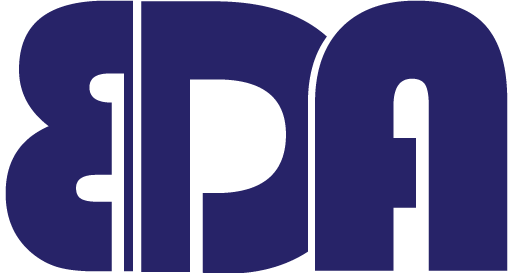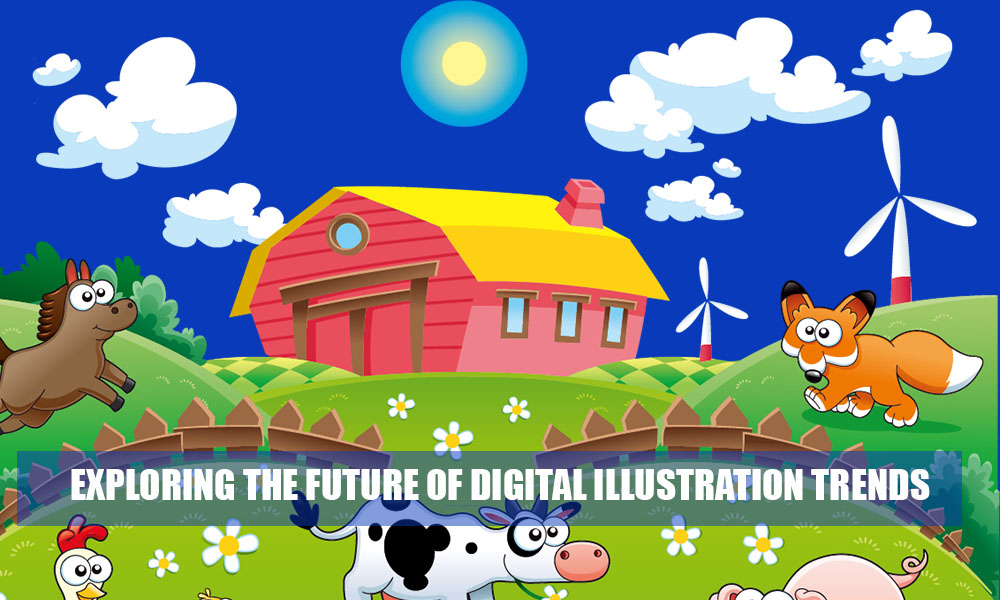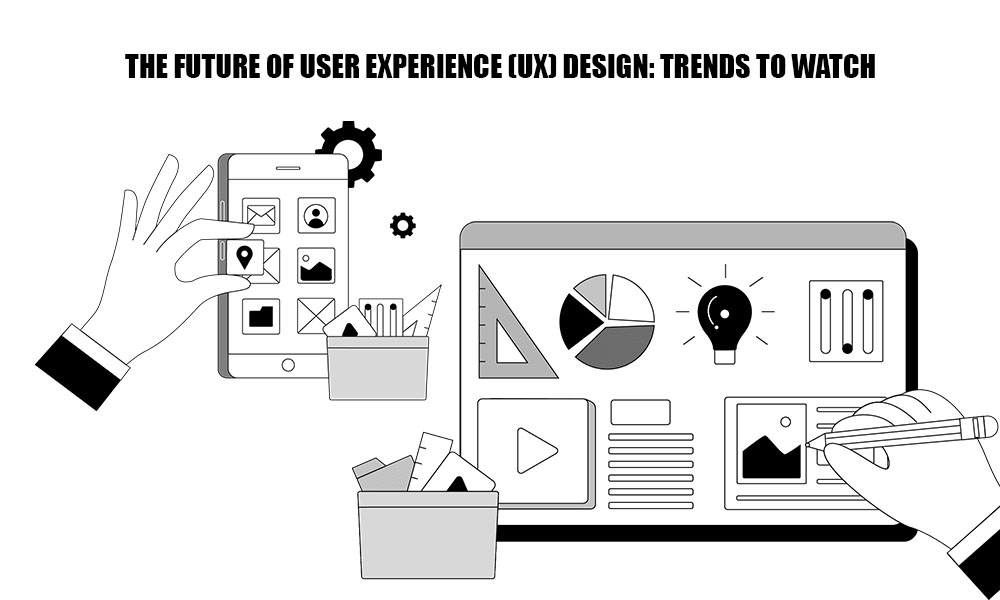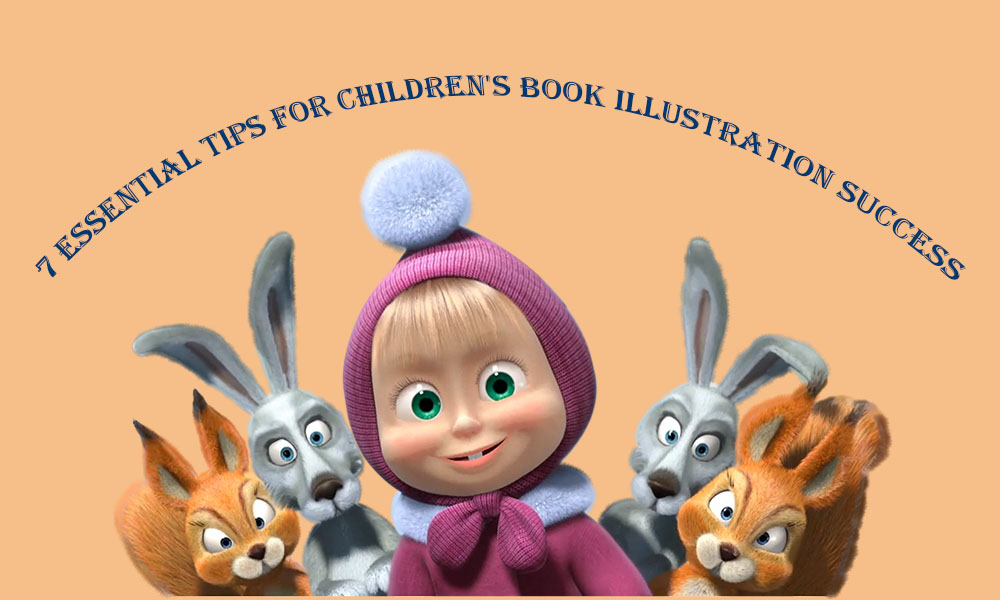Einleitung Digitale Illustration lebt nicht nur weiter:
It is flourishing and developing at an extraordinary rate. The days when digital art was regarded as just a contemporary substitute for traditional painting are long gone. Today, it constitutes a comprehensive revolution that is transforming our processes of creating, consuming, and connecting through visuals. The future of digital illustration is dynamic, driven by emerging technologies, evolving social narratives, and an increasing demand for expressive design. This article explores the forthcoming trends and technological developments that are reshaping digital illustration as we currently understand it.
2. The Development of Digital Illustration Admit it:
Digital illustration has significantly advanced from the pixelated graphics of the early 1990s. Thanks to tools like Adobe Illustrator, Procreate, and Clip Studio Paint, artists can now use digital canvases that mimic traditional mediums and provide boundless creative possibilities.
However, it’s not only the tools that have developed; the mindset has as well. Digital illustrators have become cultural influencers, amassing large audiences and expanding the limits of visual storytelling. The distinction between illustration and design is becoming less clear, creating new creative spaces for experimentation.
Rapid progress in technology and software capabilities is driving this evolution. Practices such as layering, blending, vector manipulation, and real-time collaboration have become standard. More illustrators are expanding their skills into animation, interactive media, and even branding, beyond just static pieces.
In addition, accessibility is a significant factor that changes the game. Styluses and tablets come at a lower cost, and platforms such as Behance, Instagram, and ArtStation provide illustrators with an international platform. The outcome? A thriving community of digital creators who are perpetually innovating, acquiring knowledge, and redefining the terrain.
- KI und maschinelles Lernen in der Illustration Über die Zukunft zu sprechen, ohne KI zu erwähnen, ist nicht möglich. Machine learning and artificial intelligence are not intended to replace illustrators; rather, they are meant to support, enhance, and motivate them. Platforms such as MidJourney and DALL·E, which generate art using AI, provide artists with novel methods for brainstorming and creating drafts.
With the ability to input prompts and receive visual suggestions, artists can generate concept art faster than ever. These tools assist in brainstorming, trying out different styles, or even generating reference images for intricate compositions.
However, the story continues beyond that point. AI is also acquiring knowledge about styles. Illustrators can teach AI to replicate their style, offering them a kind of digital assistant. This creates opportunities to expand projects and optimize workflows.
With that acknowledged, the connection between AI and human creativity continues to develop. Ethical issues regarding originality and authorship continue to be widely discussed. However, as the partnership between humans and machines grows more sophisticated, we are moving into a time in which human creativity determines the course of action while AI accelerates progress.
Integration of 3D and Mixed Media Art Flat is out; depth is in
The incorporation of 3D components is one of the most thrilling trends influencing digital illustration. Using programs such as Blender, ZBrush, and Cinema 4D, illustrators are exploring a realm of sculpted shapes and spatial narratives.
3D illustrations are no longer limited to animation or gaming. Three-dimensional art is enhancing the dynamic appeal of everyday visuals, from book covers to web design. It enables artists to explore lighting, texture, and perspective in ways that traditional 2D cannot compare to.
However, it goes beyond just 3D. A surge in hybrid art is emerging, where digital paintings, 3D renders, photographs, and scanned textures are combined into a single seamless masterpiece. Utilizing various media in this way is yielding remarkable new designs and defying convention.
The outcome? Art that’s tactile, layered in visuals, and emotive. Whether you’re designing a surreal dreamscape or a highly detailed product visual, the combination of different media is increasingly characteristic of contemporary illustrators’ toolkits.
The Rise of NFT Art and Blockchain Influence
ny conversation regarding the future of digital illustration must include NFTs (non-fungible tokens). Whether you love it or hate it, the NFT boom has transformed the valuation, purchasing, and selling of digital art.
Digital illustrators are no longer dependent on client commissions or print sales. Using blockchain technology, they can create NFTs of their work, demonstrating authenticity and ownership while connecting with collectors around the world. Digital artists are gaining financial independence and creative control through platforms such as OpenSea, Rarible, and Foundation.
Aside from their financial worth, NFTs are encouraging artists to consider concepts such as scarcity, exclusivity, and community involvement. Illustrations are being redefined by collectible series, unlockable content, and dynamic art that changes over time.
But it’s not all bright. There are still challenges related to environmental concerns and market volatility that need to be addressed. However, for numerous illustrators, NFTs present a thrilling chance to investigate new revenue models and establish digital legacies.
Augmented Reality (AR) und Virtual Reality (VR) Kunst
Picture yourself strolling through an art gallery where illustrations spring to life around you, or aiming your phone at a mural and witnessing it come alive before your eyes. That’s what AR and VR promise for digital illustration. These technologies are transforming the way audiences experience art, beyond merely viewing it.
AR makes static artwork more interactive by adding layers of engagement. Illustrators are leveraging tools such as Adobe Aero and Spark AR to produce visuals that respond to user movement, light, and touch. AR is enriching our daily interactions with illustrations, from Instagram filters to product packaging.
Conversely, VR advances immersion to a new level. Using tools such as Tilt Brush and Gravity Sketch, artists can immerse themselves in their canvas, creating illustrations within a 360-degree environment. The experience is both revolutionary and emotionally engaging.
The move towards immersive media is creating opportunities for illustrators across fields such as education, advertising, gaming, and experiential marketing. No longer is it merely about two-dimensional representations on a page or display; rather, it’s about immersive storytelling that you can experience and explore.
Eco-conscious Design Trends With the growing
global awareness of environmental issues, digital illustrators are adopting sustainability in their practices as well as their themes. What’s ironic? Although digital art appears to be “paperless,” it still contributes to carbon emissions—particularly when associated with NFTs or cloud-based tools. For this reason, the future is inclining toward more eco-friendly approaches.
A lot of artists are opting for sustainable tools and platforms that prioritize energy efficiency. Additionally, they are changing their themes and creating works that foster ecological consciousness—such as conservation of nature, climate action, and zero-waste lifestyles.
Illustrators are taking part more and more in campaigns for eco-conscious brands, producing visuals that resonate with green values. Ranging from natural color schemes to organic textures, even the aesthetics are being imbued with sustainability.
This trend mirrors a larger movement in which digital art serves not only as a means of expression but also as a tool for activism. Through inventive storytelling, artists are leveraging their talents to ignite change, inform audiences, and motivate more sustainable decisions.
8. Hyper-realistic Digital Portraiture
If you’ve been scrolling through Instagram and had to do a double take because an illustration resembled a photo, you’ve seen the rise of hyper-realism. With the help of sophisticated brushes and highly sensitive tablets, digital artists can now create details that compete with those found in high-resolution photography.
This style has been around for a while, but it is becoming sharper, more polished, and more popular. What’s intriguing is the way artists combine realism with subtle touches of fantasy—such as luminous eyes, dreamlike settings, or amplified textures—to craft portraits that enchant and perplex.
Applications such as Procreate, Corel Painter, and Photoshop provide features that mimic the pressure, texture, and behavior of actual paint, but with a level of control that is unique to digital mediums. This enables remarkable skin textures, reflections, hair strands, and fabric details.
Fashion brands, music artists, and even book publishers are embracing hyper-realistic illustration in their search for eye-catching cover art. This trend combines technical skill with digital wizardry, providing artists a platform to demonstrate both precision and creativity.
- Hand-Drawn Aesthetic in a Digital World It is ironic that as technology advances, there is a nostalgic resurgence of hand-drawn aesthetics—even within the digital domain. This trend revolves around imitating the idiosyncrasies of traditional art, such as sketchy lines, visible brushstrokes, uneven textures, and imperfect shapes.
- Illustrators are purposefully creating designs that appear raw, expressive, and human, turning away from overly refined, clinical aesthetics. This style establishes an emotional connection due to its personal and relatable nature. It’s a soulful narrative.
- Applications such as Fresco and Sketchbook enable artists to replicate the textures of charcoal, ink, or pencil directly on their digital devices. The outcome is a digital piece that evokes the sensation of having been sketched in a sketchpad or painted on a canvas.
- This trend also connects with audiences in search of authenticity. In an environment inundated with polished visuals and designs validated by algorithms, the flawed, hand-crafted illustration distinguishes itself and inspires feelings of warmth and authenticity.
Interactive and Immersive Storytelling
The days when illustrations merely served as static companions to text are over. The new trend? Illustrations that engage users and narrate the tale—at times, entirely wordlessly. Consider digital comics that respond to scrolling, or kids’ books that come to life with a screen tap.
Storytelling is evolving into a reciprocal experience. Illustrators can use tools such as Webflow, Lottie, and Rive to develop responsive animations that engage users directly. It involves more than merely displaying art; it entails developing a narrative journey.
The impact of this trend is particularly strong in digital publishing, e-learning, and marketing. Interactive illustrations are employed by educational platforms to present intricate concepts in a straightforward and captivating manner. Brands employ animations to navigate customers through user interfaces or narrate their brand story in a distinctive manner.
Illustrators are evolving into digital storytellers and architects of emotion and engagement by combining visuals, motion, and interactivity. As the distinctions between artist, designer, and developer become less clear, a brand-new domain of creative potential is emerging.




